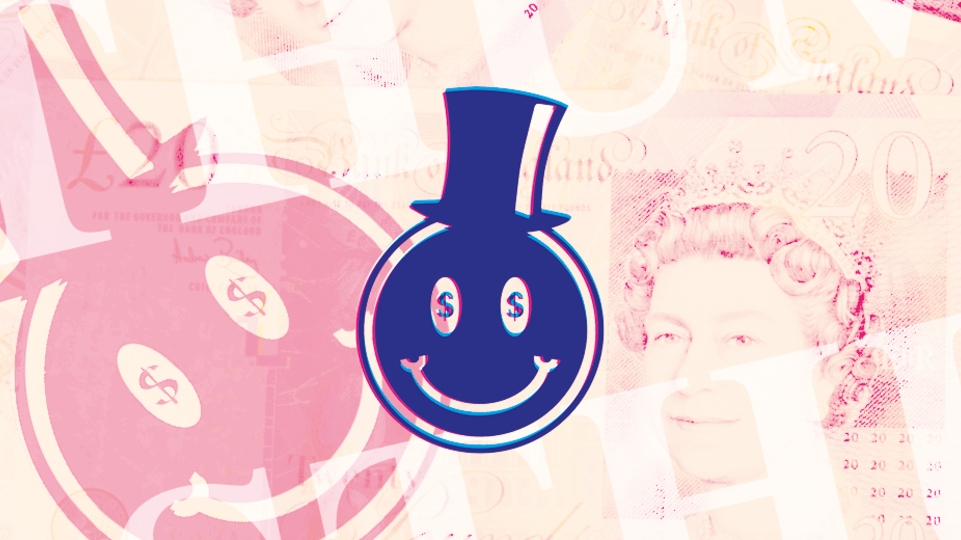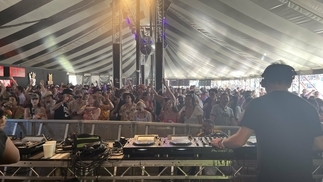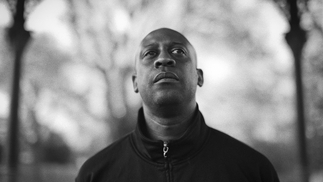Is dance music too middle class?

Is wealth and privilege damaging British dance music, and if so, what should we do about it?
WORDS: Matt Anniss
PICS: Nicola Nodland & Jillian Edelstein
Since acid house swept the UK 30 years ago and united a generation, British dance has proudly proclaimed its egalitarian credentials. Many believe that the loved up, misty-eyed utopianism that swept the country in 1988 has sustained down the decades. After all, when you’re lost in the music and blinking into the darkness, it doesn’t matter if the sweaty, smiling strangers around you are black or white; gay or straight; male, female, transgender or non-binary.
It’s certainly true that dance music has done much in recent times to tackle some diversity issues within the scene, particularly the gender imbalance. These efforts are laudable, but is it really doing enough to tackle inequality in all its forms? Away from the feral free-for-all of social media, an increasing number of DJs, promoters, producers and party people are beginning to talk about a subject that has long been taboo: wealth, privilege and class.
Their complaints are manifold, but basically boil down to one simple idea: British dance music is becoming too white and middle class. They argue that since online broadcasters such as Boiler Room made club culture “cool”, the scene has witnessed an influx of moneyed up “rich kids” and privately educated students. At the same time, those from less well-off backgrounds have been marginalised due to rising costs across the board. Regularly going clubbing, building up a music collection or setting up a small home studio costs quite a bit of money — money that those on lower incomes simply do not have. It’s a problem that’s been highlighted before in other branches of the arts, including filmmaking, theatre and rock music, but one that has rarely been openly discussed in British dance music.
“It’s the elephant in the room,” Róisín Murphy says. “I think there’s still massive classism in the UK. It’s right across the arts, including dance music, and we just don’t address it.” Murphy may have a point. According to a recent survey by the British music industry’s campaigning organisation, UK Music, 17% of British “music creators” — musicians, producers and studio engineers — were educated at private, fee-paying schools, compared to just 7% of the population.
While the figures for those who make and play dance music may well be nowhere near as distorted, many have certainly noted a similar trend within the club scene.
“Social mobility and the dominance of wealth and privilege is something that urgently needs to be addressed in dance music,” says Secretsundaze cofounder James Priestley. “Some of the true essence of the scene, the values that dance music in the UK were founded on, are being eroded.”

LESSONS FROM HISTORY
To understand where we are now and what can possibly be done to address it, we need to look at the roots of British dance music, how it developed, the kinds of people involved in the early years and the specifics of the era they lived in.
Prior to the seismic shift that was the “second summer of love” in 1988, the dancers and DJs at underground dance music events were predominantly working-class. “Middle-class kids didn’t tend to be into soul, jazzfunk or whatever the prevalent dance scene of the moment was called,” says Crooked Man producer Richard Barratt, who cut his teeth as a DJ in his home city of Sheffield in the early 1980s. “What was then called ‘black music’ was the preserve of black kids and the white working-class, and was generally looked down upon by fans of guitar-type bands. People who managed to turn an enthusiasm for club music into jobs tended to be from working-class backgrounds.”
While Barratt has a point, it wasn’t quite as clear-cut as that. For example, the rising popularity of the jazz-funk scene in the early 1980s was due in part to increased interest from middle-class suburbanites, while the arrival of electro and hip-hop from the US inspired teenagers from all kinds of backgrounds to take to the turntables or throw down a square of lino and breakdance.
When Chicago house crash-landed in the UK in 1986, it set in motion a chain of events that led to a breaking down of social barriers. By 1988, dance music was cutting through Britain’s long-established class divides in a blur of ecstasy and illegal raves. “The early years of the rave scene were very socially diverse in terms of people’s backgrounds. It really was a ‘one nation under a groove’ scenario,” explains journalist Matthew Collin, author of definitive acid house history Altered State. “Its open-access, do-it-yourself format did empower working-class people to get involved, but there were also middle-class bohemians who were thrilled by the potential of electronic music, and posh chaps with upper-class accents from places like Chelsea organising raves.”
Despite vocal opposition from the government, who saw acid house as little more than a criminal drug movement, the British state inadvertently played its part in enabling those from all walks of life to become full-time dance music evangelists. “Something that really, really helped was the benefits system and the fact that working-class kids could be bohemian,” Richard Barratt says. “To live and just make art all day, you had to have money coming in from somewhere, and that option was never there before for working-class kids. For a lot of people, the kindly benefits system in the ’80s gave you license to go out all night, make music or just flounce about — whatever you wanted to do, you could do it.”
Plenty of British DJs and producers benefitted from the government’s casual approach to benefits during this formative period for UK dance music. “It definitely helped me,” says Steve Cobby, best known for his work as one half of Fila Brazillia in the 1990s. “I spent about eight years on the dole before getting signed to Big Life Records when I was 24. I’m extremely thankful for the state for allowing me to hone my craft on £25 a week.”

Despite the “get on your bike and find a job” rhetoric spouted by the governing Conservative Party, jobseekers were rarely sanctioned if they didn’t find work within a prescribed time frame. “I was unemployed for about 15 years in total,” says Lee Renacre, who released his first record as 100Hz (alongside then production partner James Chapman) in 1989. “I was blagging it, telling my dole officer I couldn’t find a job that week, but I got away with it. That help from benefits is the only reason I’ve managed to stick with music, and I thank the state for that.”
There were also other helpful schemes, such as community studios and music projects in areas of towns and cities that were hardest hit by youth unemployment. Some music-mad youngsters also managed to take advantage of the government’s ‘Youth Training Scheme’ to find work experience in recording studios. “It was a good way to get a tea boy or tape operator job for six months,” Barratt says. “You could then try and stick around once the scheme finished, probably back on the dole, but with a bit of real life studio knowledge and something to work towards.”
The Enterprise Allowance Scheme, which paid £40-a-week to would-be entrepreneurs who wanted to start businesses, also enabled those with creative ambitions. “The Enterprise Allowance Scheme has been reported to have helped sustain the founders of Warp Records when they launched the label, as well as Jazzie B of Soul II Soul,” Matthew Collin says. “It gave people from all social backgrounds the possibility to experiment and make mistakes without the pressure of having to commit to full-time employment.”
NO MONEY, NO PROBLEMS
By the time a new generation was coming of age at the turn of the century, British dance music’s first bubble had burst. Big clubs were shutting, turntable sales were plummeting and the mainstream media had gleefully declared that dance music was dead. The scene and associated industry contracted dramatically, offering new opportunities for those who wanted to make moves on the underground. “When I moved to London in the late ’90s, all I needed to get by was a job in a bar,” says Josh Doherty, one half of Posthuman and the man behind the I Love Acid parties and label. “With that I could afford to live in Dalston, put on parties, write music and start a record label.”
Two others who took a similar path were Giles Smith and James Priestley. They’d first met while attending a private, fee-paying school in Cambridgeshire. By the time they left university, their self-made parents instructed them to go out and make it on their own. So, fired by a passion for underground house and techno, they put on their first Secretsundaze party at 93 Feet East in Shoreditch in 2001. “When we started out, it was a free party with residents and local guests, paid for by a cut of the bar takings,” Priestley says. “Even when we started getting international guests a year or so later, we were spending very little. That was great, because it allowed us to grow in our own time. We didn’t have pressure and there wasn’t much competition.”
As long-standing London promoters, Priestley, Smith and Doherty have seen the capital’s club scene change dramatically over the last two decades. “Now there are so many things going on that it’s hard to stand out,” Priestley says. “I think people starting out now probably feel the pressure to invest a bit more in talent. Knowing what DJ fees are like now, even doing something small scale, you’re looking at investing at least £1,000-2,000 per event. That simply wouldn’t have been possible for us when we started.”
Those figures may seem relatively “affordable”, but these are for low-capacity venues with stripped-back line-ups of underground DJs. Costs at mid-size and large venues are naturally much higher. During the research for this feature, one promoter revealed that his minimum budget for an event at an 800 capacity venue was around £5,000 — and even then, only if DJs agree to play for “mates rates”.
Today, fees for in-demand DJs dwarf even those seen during the “superstar DJ” era in the late 1990s. Competition among promoters is fierce, a situation that just plays into the hands of managers and agents, who stand to benefit from inflated prices. “DJs generally don’t tend to show much loyalty — often they just go and play where the money is the highest,” James Priestley says. “It’s very short sighted, because it only feeds back into what people pay on the door, which in turn makes the events totally inaccessible to loads of people.”

It’s true that club ticket prices have risen dramatically in the UK over the last few years. These days, it’s rare to be able to get into a venue with a top-tier line-up for less than £15. In some cases, prices are even higher, with big branded events such as Elrow often charging £30 or more for entry. Many club promoters try to keep ticket prices down, but it’s hard to do this and break even, given the increased costs for DJs and venue hire. The latter is a by-product of increased competition between promoters for a dwindling number of licensed venues.
Put simply, there are fewer clubs around due to the buildings in which they once operated being sold off to housing developers. “In the past, when you saw a club being shut down, it was because of police, but now clubs are closing down because the landlord has decided he or she wants to put flats there,” Josh Doherty says. “I could name you 20 venues in London that have closed because of gentrification. You’ll see the same problems in other British cities as well.”
LIVING ON THE BREADLINE
Some may struggle to empathise with the plight of club promoters, but as James Priestley has pointed out, increased costs tend to be passed on to clubbers via higher ticket prices — prices that many on low incomes simply cannot afford thanks to the rising cost of living. According to the Offi ce For National Statistics, the Consumer Price Index, which measures the cost of an average set of goods and services such as food, clothing and transportation, has risen by almost a third since the year 2000. Over the last decade, average rental costs in the UK have doubled, too. Naturally, rents in London have increased the most in that time. In the summer of 2018, London renters paid an average of £1,884 per month for accommodation. Thanks to spiralling house prices, more people than ever before rent in the capital — one in three as of February 2018, compared to just 15% at the turn of the Millennium.
The cost of buying a house has risen even more dramatically. In the two decades between 1996 and 2016, house prices in London increased by an average of 400%. Percentage increases were even more astronomical in once-deprived areas that have undergone “gentrification”. Average house prices in Hackney, the London borough that includes Dalston, Shoreditch and Hoxton, were just £46,000 in ’96, but had shot up to £567,000 in 2016, an increase of 690%.
“Many people can just about afford to live in London now, but they’re having to work really hard and do long hours just to get by, let alone go out and party,” James Priestley says. “Now, there are very few people from less affluent backgrounds or people of colour involved in the scene. When you come across people in the scene who aren’t middle-class and white, it’s more of a surprise. That’s so bad.” Josh Doherty agrees with this assessment. “If you look at the new blood in the scene in this city, it’s either people who were born in London making grime, or rich kids who’ve come in from elsewhere. House music is not getting any new blood from the poor kids — it’s just rich kids, because they’re the only fuckers who can afford to move to London.”
There have been rumblings within the London club scene for a while about moneyed up promoters using inherited wealth to infl ate costs across the board. During interviews for this feature, the same few names kept cropping up. These DJs and promotion crews were approached to tell their side of the story, but declined to comment. “There are definitely some promoters in London who do similar bookings to us but have very deep pockets for whatever reason,” James Priestley says. “They consistently spend over the odds on DJ fees, which pushes them up across the board.”
It’s not just within house and techno circles that the demographics of dance music are changing. Drum & bass, a style initially forged in the dances and soundsystem clashes of some of London’s most impoverished neighbourhoods, is no longer the preserve of what Fabio, one of the scene’s founding fathers, calls “ghetto kids”. Like other styles, drum & bass has become big business over the last decade, with some of the scene’s biggest “brands” and artists coming from backgrounds very different to their predecessors. Fabio, though, doesn’t think the scene he has devoted his life to is becoming too white, privileged and middleclass.

“I just don’t see it,” he says. “It’s not so much that drum & bass has become middle-class, it’s just grown up a bit. You have drum & bass nights now that are run like corporate companies, with more expensive tickets and DJs who are paid a little bit more. But you never walk into any of these things and think, ‘It’s a bit middleclass in here’. But if I go to a big house night in Ibiza, I can see it.” He does admit, though, that d&b’s appeal is wider than it has ever been, despite the scene’s relative lack of media coverage and a historic “stigma” brought on by high levels of crime and violence in the mid 1990s. “My daughter is 16 and a lot of her school mates, who are a bit richer, they love jungle and drum & bass,” he says. “They all love jump-up, which has risen up through suburbia. You do get a few of the rich kids embracing it, but historically it’s never been like that.”
CHANGE IS WHAT WE NEED
If we accept that dance music culture is becoming more expensive to access, with fewer DJs, music-makers, clubbers and promoters from less affluent backgrounds breaking through, it raises further questions. Firstly, should we be worried about what this will mean for the music itself, and specifi cally innovation within the scene? If so, what should the dance music industry in the UK do to change things for the better? “It has to be recognised that innovation has always come from the margins, not the mainstream,” Matthew Collin says. “The wealthy and privileged will not just wake up one morning and decide they want to renounce their advantages and change the situation — it’s up to the people who believe in this music to take action themselves, to speak out and to organise independently.
That’s how this culture began, and that is the way forward to sustaining its creative future.” Thankfully, some are taking matters into their own hands in a bid to increase opportunities and close the inequality gap. Dotted around the country you’ll find a smattering of community focused studios and production colleges that offer free, cheap or subsidised courses for would be electronic music-makers from impoverished or working-class backgrounds.
Examples include M.A.P in Leeds, home of the legendary Cosmic Slop Community Soundsystem, and Green Door Studio in Glasgow. The team behind the Dixon Avenue Basement Jams label also run an offshoot, Glasgow Alumni Records, focused on mentoring and championing young producers from a wide range of backgrounds. Then there’s Secretsundaze Studios in East London, owned and operated by Giles Smith and James Priestley. “We do something monthly called ‘Out of the Box’,” James Priestley reveals. “Each month we select three people to come in for a free session with Tony Nwachukwu from CD-R. That’s completely free, and we try and keep that as broad as possible in terms of people’s backgrounds when we get them in, so it’s accessible to young producers in the local area.”
For the past three years, they’ve also been mentoring a group of young MCs and producers alongside their friend George Levings (a producer best known for his work as Endian and Commix). “We give them free access to the studio during the summer holidays, with George helping them lay down and produce tracks,” Priestley says. “It’s a small thing, but hopefully that shows some of the possibilities of things that can be done.”

Priestley points out that much more could be done if available arts funding was pushed towards community electronic music projects. “In this age of austerity, one of the first things that gets cut is arts budgets, and the arts has traditionally been a great vehicle for social mobility,” he says. “This needs to be addressed. It will inevitably lead to patrimonial capitalism, where people are inheriting wealth rather than making it themselves. This goes completely against the ideals of entrepreneurialism, that have always been a part of dance music in the UK.”
One particularly pertinent example of how community arts projects struggle to get funding was provided by Hull’s tenure as European City Of Culture in 2017. The city secured the accolade, and the funding that went with it, with a bid that prioritised the potential of arts and culture to change lives in one of Britain’s most impoverished cities. Of course, as 2017 rolled around, it didn’t quite turn out that way. “They dropped the ball massively,” Hull-based Steve Cobby says. “Music from the city wasn’t represented anywhere near enough. What electronic or marginal music that was showcased was imported, not local. They did next to nothing to promote community engagement in music. It was just about getting bums on seats and filling up hotels.”
These failures are explored further in Sean McAllister’s documentary film A Northern Soul, which aired on BBC2 in November. The documentary’s central figure, a local warehouse worker and part-time hip-hop MC called Steve Arnott, struggled in his bid to get funding for a community-focused mobile recording studio called the “Beats Bus”.
“It took me three days to write our City Of Culture funding bid, and I was pretty confident that I’d nailed everything they wanted,” Arnott remembers. “When I got an email saying the bid had been rejected, it felt like they’d not even read it. It was massively frustrating.” Arnott, who grew up in one of Hull’s most impoverished neighbourhoods, believes that hip-hop is a great vehicle to change lives for the better. After all, it changed his. “I think I’d have got into a lot of trouble had I not got into hip-hop at a young age,” he says. “I wanted to be an MC, but I didn’t have anywhere to do it, and I couldn’t afford to book a studio. That’s why I want to make access to a studio free.”
Since McAllister’s documentary aired on BBC2, donations to Arnott’s Beats Bus project have been rolling in. “It gives me the chance to roll out the project which I wanted to do in the first place, which is to take the bus to the streets and parks in estates where kids are getting themselves into trouble, because they’ve got nowt better to do,” he says. “We want to create aspirations and keep them out of trouble. That money enables us to do that next year, which is brilliant.”
The success of the Beats Bus is heart-warming, but in truth it may not have been possible without the profile provided by McAllister’s documentary. The issues that Arnott is trying to tackle are not restricted to Hull, hip-hop or dance music at large, but part of widening inequality in British society that has yet to be fully addressed. “Society is more split in terms of opportunity than at any time since the 1950s,” Richard Barratt says. “Dance music and its audience is more varied in terms of class, colour and nationality than ever before, which is great. The problem is for youngsters starting from scratch. Only ones with a cushion of money to fall back on can afford to spend time trying things out and experimenting. Unfortunately, without a massive shock to the system, I can’t see that changing any time soon.”






